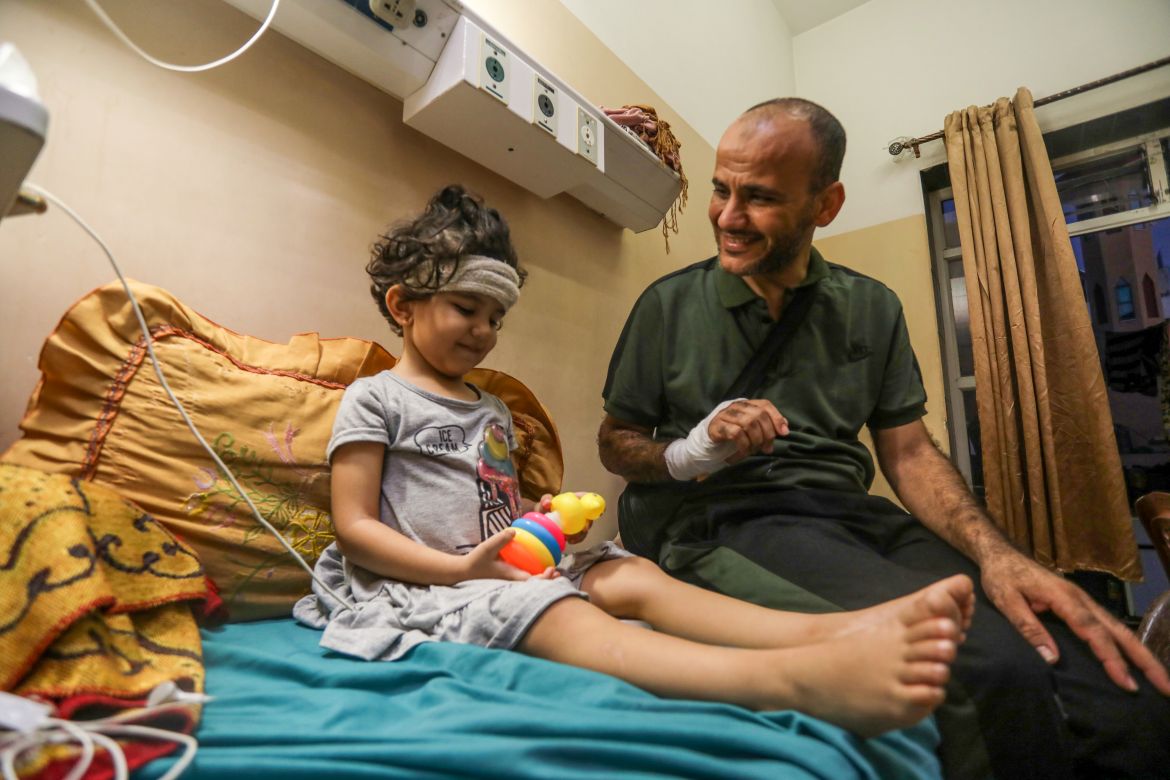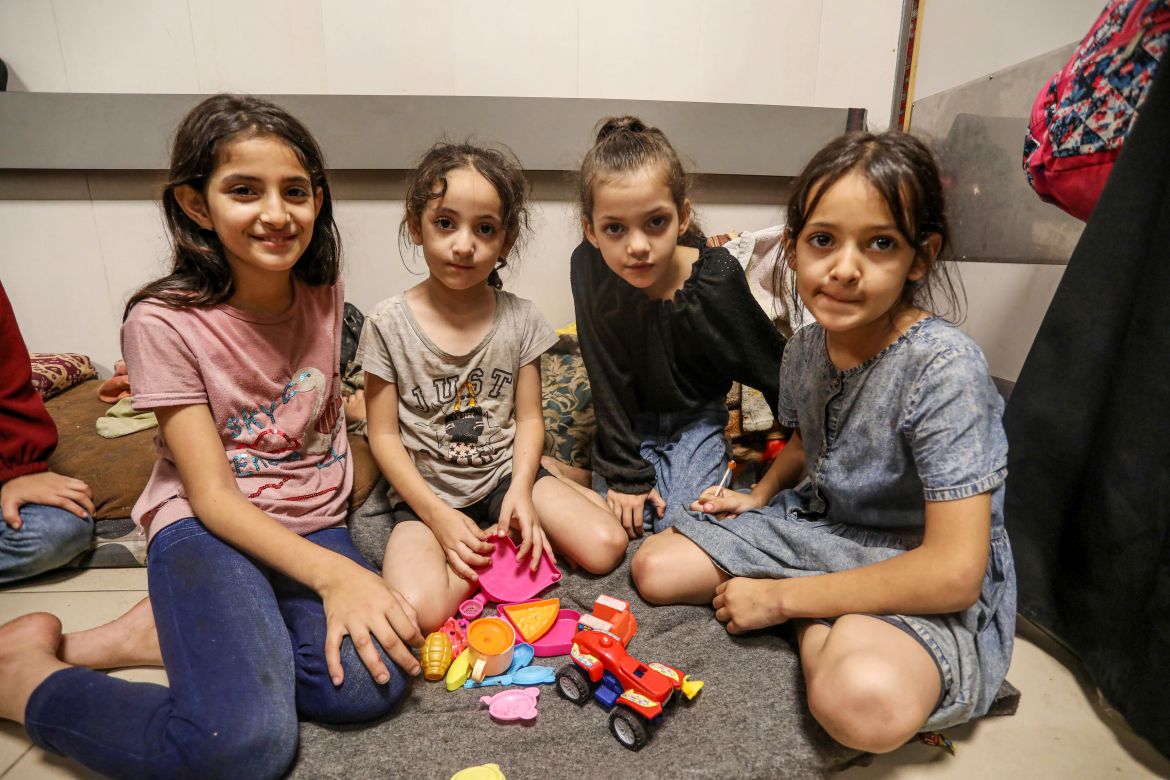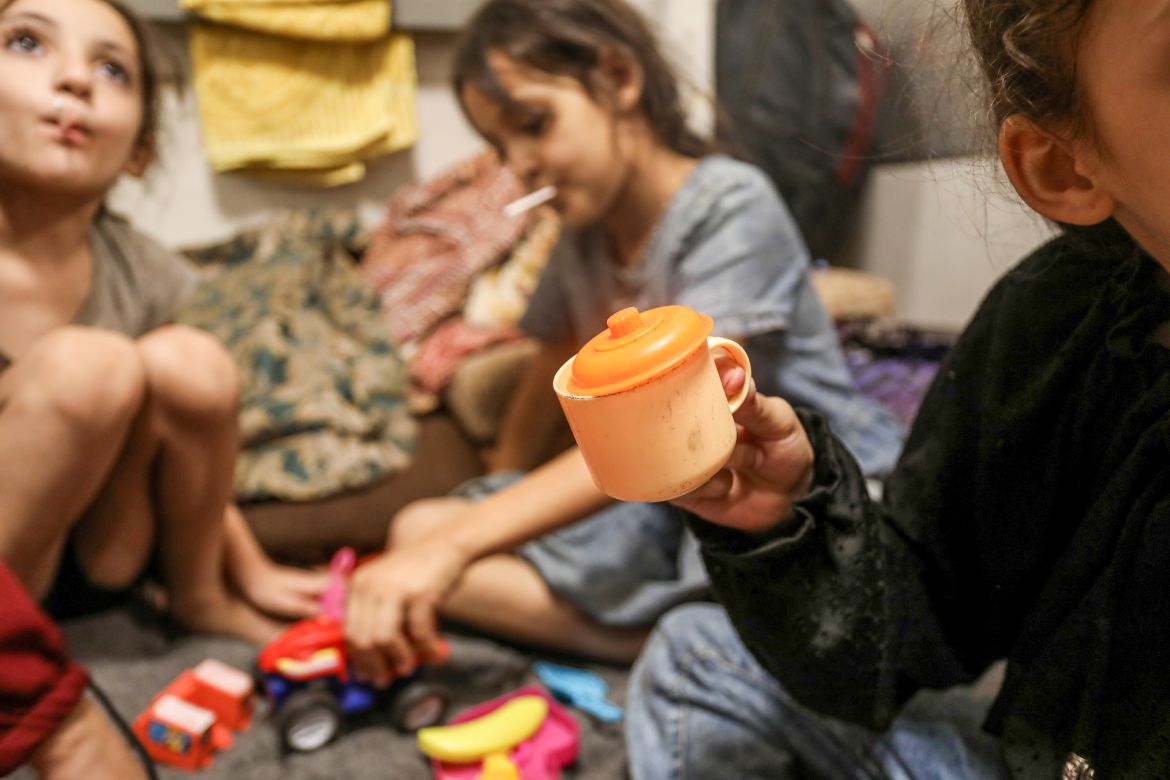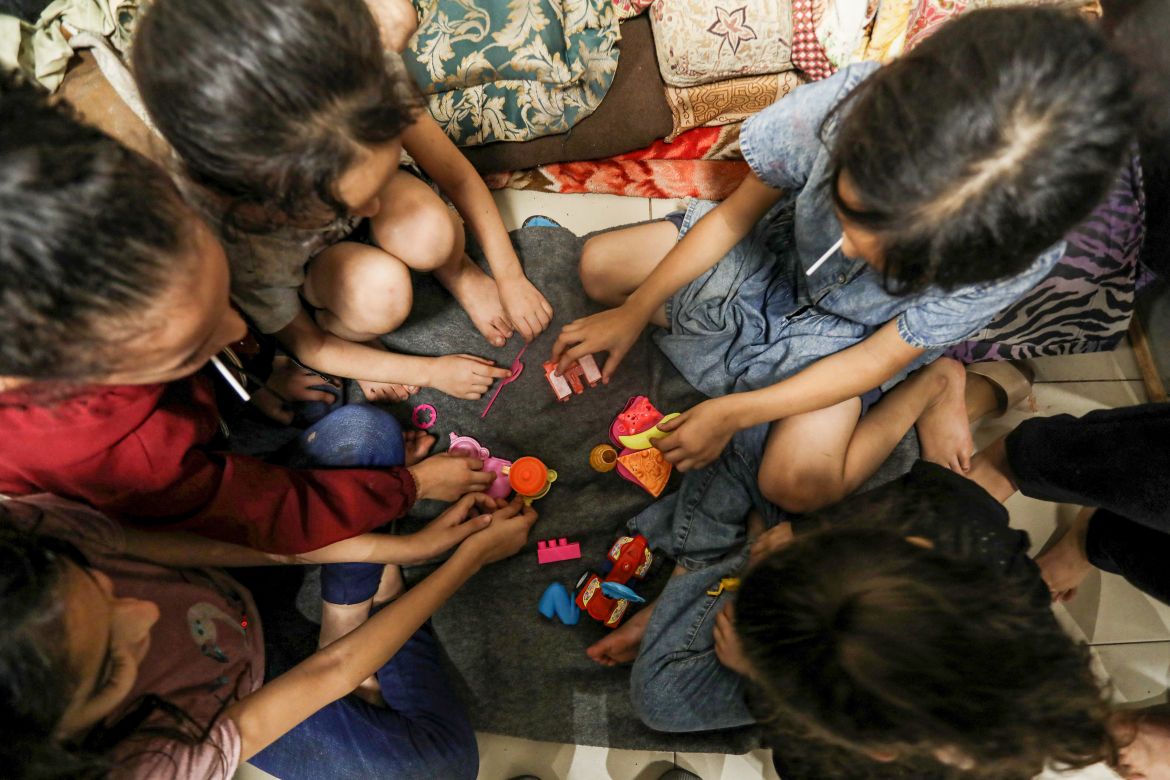In Pictures
Gaza children displaced by Israel’s war cling to toys in al-Shifa Hospital
Thousands of children are sheltering at the Shifa Hospital with their families and find comfort in the toys they managed to pack with them.

Gaza City, Gaza Strip – Farah Bakr and her doll are inseparable.
When her home was partially destroyed by an Israeli air raid, she thought the doll was lost, but managed to spot her light blue dress under the debris.
“Bombs!” Farah said. “They bombed the mosque next to us,” she continued in wonder.
The five-year-old dug the doll out and dusted her off, insisting on bringing her to the al-Shifa Hospital where she and her family are seeking refuge.
“She’s broken but I want her with me,” she said. “I wash her and comb her hair and put it in a ponytail.”
The constant bombardment of Gaza terrifies the children living there, and Farah was no different, even when she slept.
“When the bombing gets intense, I hold her, as she flinches in her sleep,” her older sister Shireen, 21, said.
The children in al-Shifa Hospital are displaced from their homes and familiar spaces, spending their days and nights in fear of the constant boom of bombs dropping all around them.
Some of them managed to grab a familiar item from homes they were bidding farewell to, digging a small, brightly coloured toy out of the debris like Farah did, or picking up the nearest thing they could hold in their hands.
Literally holding on to something that could remind them of home.
The extreme crowding of the hospital means the families have been setting up wherever they could find a spot to settle, in corridors, in the garden grounds, or on the floors of hospital rooms.
Taiseer al-Sharif and his family gathered around a hospital bed with little Jude, 3, sitting on it with a bandage on her head.
They had been driving south from Gaza City towards Wadi Gaza on October 13 when Israeli warplanes targeted the vehicle next to them. The family were moving south as the Israeli army had instructed them to do, “for their own safety”.
“The shrapnel got us,” Taiseer said. “Blood was running down our bodies. Jude was hit by a piece of shrapnel in her head and was knocked unconscious.”
The family tried to hide behind the concrete barrier of a police checkpoint, and eventually made it back to Gaza City on foot, with Taiseer telling his older children to walk several metres apart “so that if we were targeted, at least we wouldn’t all die”.
An ambulance took them to Shifa, and Jude woke up from her coma a day later, unable to utter a word. She sustained nerve damage in her left leg, which she is currently receiving physiotherapy for.
She sat up in bed, holding on to a simple plastic ring stacker toy that seems to comfort her. Her father had taken her out of the hospital ward to buy it for her.
“I try to lift her mood, carry her outside to the shops to buy her favourite things, her favourite food,” her father said.
“She likes cup noodles, but can only drink the broth right now. It’s still a massive improvement from before though,” he continued. “She is slowly regaining her speech and stopped throwing up. Before she won’t interact with anyone.”
Nearby, Batoul Abu Karesh, 10, played with her sisters with plastic fruits and vegetables, the only toys they managed to take from their home in the Karama neighbourhood.
“I’m not that scared of the bombing,” she said bravely. She and her sisters were comforted by having other children around them.
“I was more scared when we were in our home.”
“I want the war to end. I wish we could all stay alive and not lose each other,” she added.
Since October 7, Israel’s offensive on the Gaza Strip has killed more than 4,300 children, double the number of Palestinian children killed in the occupied West Bank and Gaza since 1967.
More than 10,500 Palestinians have been killed, with almost half of that number being those who followed the Israeli army’s orders to move to south. More than 2,660 Palestinians are still under the rubble, 1,350 of them children.






